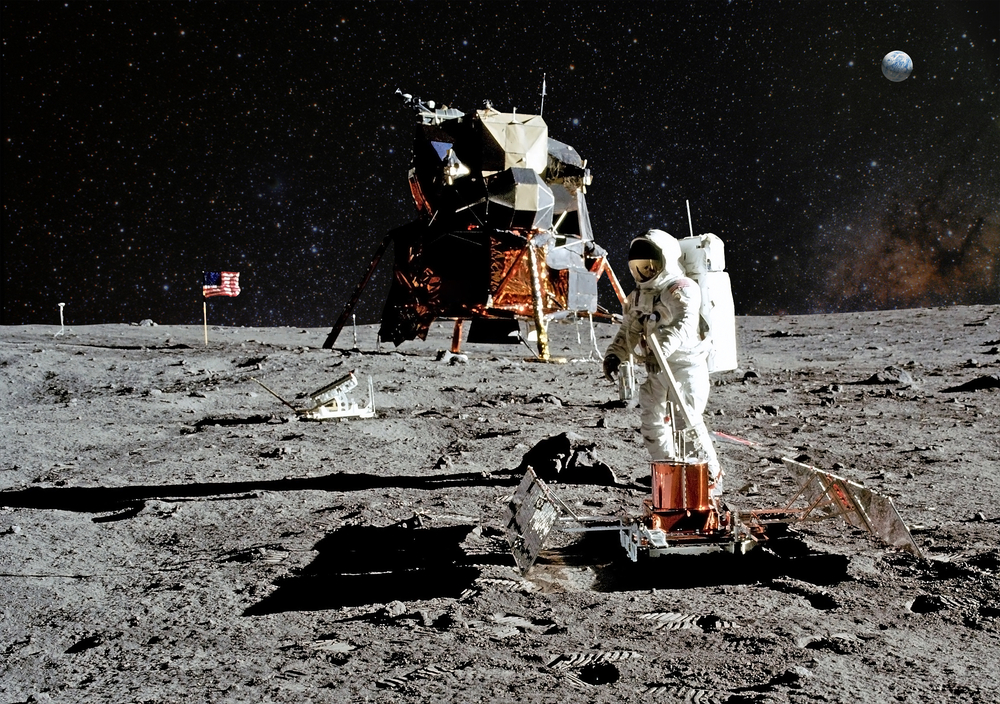VASIMR Developed By USA – The Plasma Rocket That Could Reach Mars in Just 39 Days

What if I told you that the real frontier isn’t just out there in space — it’s inside the way we think about progress? For decades, the stars have called to us, but we’ve answered cautiously, tied down by the limits of our own imagination and the tools we’ve inherited. We’ve launched rockets, yes — but also doubt, delay, and fear. We’ve measured our steps in centuries, not in courage. But now, a new kind of engine is whispering a louder truth: that it doesn’t have to take a lifetime to touch another world. That the pace of our dreams can match the urgency of our potential.
This isn’t just a story about a rocket. It’s a story about momentum — how we build it, how we lose it, and how we reclaim it. The Variable Specific Impulse Magnetoplasma Rocket — or VASIMR — is more than a scientific breakthrough. It’s a symbol. A symbol of what becomes possible when we dare to reimagine the basics: how we move, how we power that movement, and why we choose to go in the first place. Because if we can redefine how we travel through space, maybe we can also redefine how we navigate struggle, transformation, and the future itself.

Rethinking Space Travel — The Promise of Plasma Propulsion
For decades, the idea of reaching Mars has been more of a dream than a realistic goal. Conventional rockets, relying on chemical fuel and short bursts of thrust, typically take six to nine months to reach the Red Planet. That’s not just a logistical delay — it’s a direct risk to human lives. The longer astronauts are in deep space, the more they’re exposed to cosmic radiation, microgravity effects, and psychological stress. But what if we could rewrite the script?
Enter VASIMR — the Variable Specific Impulse Magnetoplasma Rocket. Unlike traditional propulsion systems that deliver explosive jolts, VASIMR offers a continuous, steady push. It uses magnetically contained plasma — an ultra-hot, electrically charged gas — to generate propulsion. At temperatures surpassing 10 million degrees Celsius, this plasma is expelled to produce thrust far more efficiently than chemical combustion. The result? A potential Mars mission in just 39 days.
But this leap in speed doesn’t come without a cost. VASIMR requires a massive 200 megawatts of power to operate at full capacity — an amount far beyond what today’s solar arrays can deliver. The current frontier lies in nuclear power — compact reactors that could provide sustained, high-output energy in space. If cracked, this pairing of nuclear and plasma technologies could mark a turning point in space exploration.
The implications go well beyond Mars. With less propellant needed, future missions could stretch to Jupiter, Saturn, and beyond — and not just in our grandchildren’s time, but potentially within a few decades. More than a propulsion upgrade, VASIMR represents a paradigm shift: from brute-force travel to precision and efficiency, from long waits to real-time exploration.

Why Speed Matters — The Human Cost of Slow Space Travel
When we talk about reaching Mars faster, it’s not just a question of technological elegance or scientific pride — it’s a matter of human survival. The journey to Mars, using traditional chemical rockets, takes between six and nine months. That’s six to nine months of exposure to deep-space radiation, isolation, and the physical deterioration that comes from microgravity. Unlike Earth, where our atmosphere and magnetic field shield us from cosmic rays and solar radiation, space offers no such protection. The longer astronauts are exposed to these conditions, the greater the risk of developing serious health issues, including increased cancer risks, vision problems, and irreversible damage to muscles and bones.
A propulsion system like VASIMR doesn’t just make the journey shorter — it makes it safer. Cutting the travel time to just 39 days drastically reduces exposure to space radiation, which has no easy solution in current spacecraft designs. Less time in microgravity also means less muscle atrophy and cardiovascular strain. From a psychological standpoint, shorter missions could help reduce the risk of cognitive decline, mood disturbances, and the complex interpersonal challenges that long-term confinement brings. In many ways, speed becomes a form of protection — not just for the body, but for the mind.
There’s also a broader philosophical layer to why speed matters. A quicker trip could allow more frequent missions, better emergency response capability, and less logistical overhead in terms of supplies and life support. It turns the idea of interplanetary travel from a rare, high-risk expedition into a more routine — and possibly even commercially viable — operation. Speed collapses distance, and when distance collapses, Mars stops feeling like a distant world and starts becoming part of our extended neighborhood. That mental shift could be just as transformative as the physical one.
Ultimately, the value of a 39-day Mars mission isn’t just about bragging rights or beating a timer. It’s about reducing the risks that have kept human space travel in low Earth orbit for the last half-century. It’s about expanding our potential while preserving our humanity. And it’s about confronting the harsh truths of space not with resignation, but with invention.

From Mars to the Stars — The Long Game of Plasma Propulsion
While much of the conversation around VASIMR centers on Mars, its true potential stretches far beyond the Red Planet. One of the most powerful aspects of plasma propulsion is its scalability. Because it uses significantly less propellant than chemical rockets and can provide continuous acceleration, it opens the door to deeper, more ambitious missions — ones that stretch into the outer solar system and, someday, even toward interstellar space. With traditional propulsion, missions to Jupiter or Saturn take years. With a fully powered VASIMR engine, that timeline could shrink dramatically, making exploration of the gas giants and their moons more practical within a human lifetime.
This kind of propulsion also enhances mission flexibility. A spacecraft powered by VASIMR can adjust its trajectory mid-flight with greater ease, making it better suited for dynamic missions — such as asteroid mining, planetary defense, or even crewed flybys of multiple destinations. It could even support return trips, enabling astronauts not just to land and stay, but to come back safely — a concept that remains logistically tenuous with current methods. Faster missions also mean faster data collection and response time from Earth, making science more immediate and more interactive.
And then there’s the question that lives at the edge of all human curiosity: Could we go even further? Plasma propulsion is considered a candidate technology for future interstellar probes — missions like Breakthrough Starshot or long-term concepts for exploring Alpha Centauri. While VASIMR itself may not yet be ready for such distant journeys, it belongs to a family of technologies that point us in that direction. It teaches us that propulsion doesn’t have to be a one-time burst; it can be a sustained push into the unknown. It invites us to think not in terms of destinations, but of journeys — ongoing, evolving ones that reshape how we define exploration.

Standing on the Edge — What Happens If We Don’t Leap?
Progress isn’t just about what we achieve — it’s also about what we risk by standing still. For every breakthrough we celebrate, there are countless missed opportunities buried in hesitation. If we choose not to invest in technologies like VASIMR, if we continue to rely solely on outdated propulsion methods and safe, short-range missions, we risk turning space exploration into a museum — not a movement. We risk confining our greatest potential to Earth, a planet increasingly stressed by overpopulation, climate change, and geopolitical fragility.
The idea of interplanetary travel might feel distant or abstract, but it has real-world consequences. Technologies developed for space have historically transformed life on Earth — from satellite communications to medical imaging to water purification. Imagine what could emerge from the innovations required to build a high-efficiency, nuclear-powered plasma engine. Clean energy systems, advanced materials, compact reactors — tools that could solve Earth-bound problems while preparing us for the stars. The cost of inaction isn’t just scientific stagnation; it’s forfeiting the ripple effects that space-driven innovation brings to our daily lives.
And beyond the practical lies something deeper — the cost to the human spirit. We are wired to explore, to question, to create. If we stop pushing boundaries, we risk dulling the very edge that makes us human. Without bold ventures, we become a species waiting — waiting for permission, waiting for certainty, waiting for someone else to go first. But the future doesn’t wait. It moves forward, with or without us.
The Future Isn’t Waiting — It’s Asking Who’s Ready
Technology like VASIMR doesn’t just alter the mechanics of space travel — it challenges the way we think about progress, patience, and purpose. It asks us whether we’re content with crawling toward the stars, or whether we’re willing to do the hard, imaginative work required to leap. But this isn’t just a question for scientists or engineers. It’s a question for all of us. Because the decisions we make today about energy, investment, and ambition will define whether future generations inherit a world that reaches out or one that retracts in fear of the unknown.
We often talk about the future as if it’s a distant point on a timeline, something to eventually arrive at. But the future is built choice by choice, and it begins the moment we stop letting fear or convenience hold us back. Plasma propulsion isn’t just a marvel of physics; it’s a mirror — reflecting back our willingness to confront limits, rethink what’s possible, and build systems that align with our highest aspirations rather than our safest bets. Are we bold enough to back technologies that won’t pay off immediately, but will shape the course of human history?
And even if you’re not piloting spacecraft or designing nuclear reactors, you’re still part of this trajectory. Every generation is given tools. The question is: what will we build with them? Will we settle for improving what already exists, or will we dare to create what has never been? VASIMR reminds us that breakthroughs are born not just from invention, but from vision — from those who look at the impossible and say, “Let’s go anyway.”
So here’s the challenge: don’t just admire the rocket — think like one. Move steadily toward your goals. Burn cleaner. Push further. And never stop accelerating toward a life, a society, and a world that dares to leave Earth a little better — and a little braver — than we found it.
Loading...

